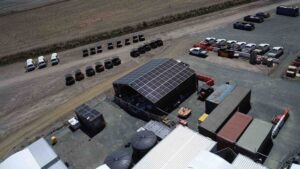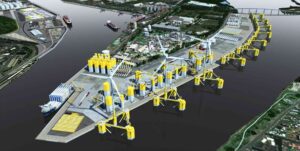Swedish wind power company SeaTwirl has won the right to proceed with testing its floating vertical-axis wind turbine in a fjord off the coast of Norway.
SeaTwirl had been on track to test its unique offshore wind generation technology in early 2022, when a legal challenge mounted by a group of Norwegian anti-wind groups put its plans on hold.
Nearly a year later, after a series of appeals, the Norwegian Water Resources and Energy Directorate found in favour of SeaTwirl, giving it permission to continue with planning and installation of the 1MW S2x prototype and guaranteeing an end to any further appeals.
“A long-awaited decision in a process that is always difficult to predict,” said Peter Laurits, CEO of SeaTwirl.
“The appeals process has created uncertainty around the schedule for S2x which is a capital-intensive project with long lead times. Our main focus is the commercialisation of large turbines, SX, in floating wind farms.
“The outcome provides freedom to choose and plan the installation of S2x in the way that best supports that goal.”
While vertical-axis turbines are not a new technology, they have not been widely deployed. SeaTwirl is banking on its ability to combine it with floating turbine technology, which allows offshore wind turbines to be installed in deeper waters.
It claims that its technology has a 21 per cent lower levelised cost of energy than traditional horizontal-axis wind turbines, and says its turbines can be more closely spaced.
Horizontal-axis turbines – whether they are floating or fixed to the seafloor – must be well spaced so as not to distort wind conditions. Place these turbines too close together, and the turbines at the front of the farm will interrupt the wind for those further back.
This is not the case with vertical-axis turbines, its proponents say, where placing the turbines closer together actually improves overall performance, thus increasing the energy production for a given area.
SeaTwirl also points to research that has concluded that vertical-axis wind turbines have a higher structural limit than horizontal-axis turbines, meaning they can be built larger.










